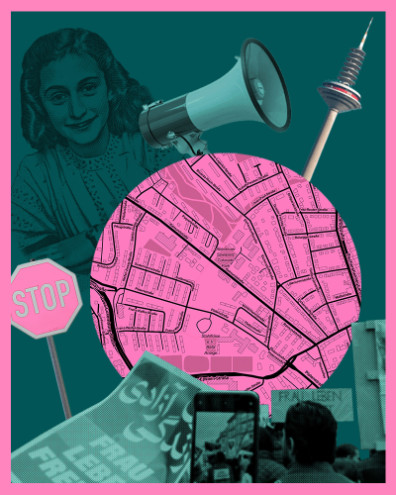
What does freedom mean? What does freedom need? How does history relate to the present? And how can we commemorate Anne Frank and follow her example by sharing our perspective on the world, by raising our voices as young people and sharing our experiences and thoughts? These and other questions were addressed by 13 young people from the Anne Frank School in Frankfurt at the Anne Frank Educational Centre. We were out and about in Frankfurt’s Dornbusch neighborhood, conducted interviews with protesters in front of the Iranian embassy, with the managers of a shisha bar and with local residents, and left traces in the public space.
The result is “Longing for Speech and Freedom” – an audio walk / location-based podcast on the feminist revolution in Iran, the racist attack in Hanau, safe spaces, discrimination and empowerment and the topicality of Anne Frank’s diary.
Credits
idea: Astrid Kasperek
script: Sophie Burger
script editing: Marie-Sophie Adeoso
voices: Ahou Nikazar, Cara Gurr, Roxanne, Noel, Jeremy, Eric, Eren, Kavin, Leo, Safae, Aleksandra, Sonja, Leona, Elif
production: Storydive
music: Shervin Hajipour, Ben Salomo
pedagogical supervision: Marie Lara Möller, Awa Yavari
commissioned by: Bildungsstätte Anne Frank
sponsor: city of Frankfurt
Hosted by: Storydive

